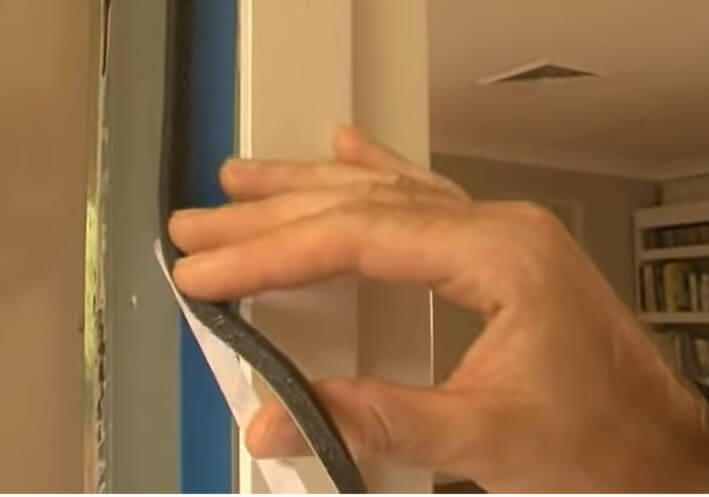The sweltering summer weather normally begins in March, when the heat index reaches roughly 38°C, and continues until May when it reaches a record 45°C.
In tropical places, this “felt air temperature” welcomes seasonal treats like samalamig and ice-cold halo-halo. However, staying hydrated and in the shade can only go you so far in terms of enjoying the sunshine. A more rational and healthy investment for the next season is to improve your home environment.

Since I can’t turn back the hands of time, I compiled a list of 11 Summer Home Preparation Tips.
1. Inspect and Service Your Air Conditioning Unit
We all like the long, sunny days that summer brings. That is until you feel the need to cool down. It’s usually a good idea to make sure your air conditioner is operating before you need it. It’s always a good idea to replace the filter after the winter. Check out how the unit works by turning it on. Contact a professional to get the unit serviced if you see any indicators that it is not cooling as chilly or as quickly as it should.
2. Open Windows and Balcony/garden Doors in the Morning and at Night
It’s best to open doors and windows early in the morning and late in the afternoon when the hottest portion of the day has passed. The key is to keep your home’s air flowing. Have you ever noticed that flowing air is cooler than static air? Consider how a breeze would pass through your home. Make sure you have windows open at opposing ends of your house with doors open in between to do this. This will cause a draft and allow air to freely circulate around your home.
Invest in a net to cover door frames or windows if you notice flies and mosquitos getting in.
The night is the most essential time to keep your windows open. This is the coolest time of day. Leaving these open while sleeping is another technique to keep the house cool at night.
One last piece of advice for anyone with magnificent sash windows: make sure the top and bottom windows are both open in equal proportions. Cool air enters through the lower entrance and warm air exits through the top opening, as built by the Victorians. At least, that’s the theory!
3. Cover Your Windows
Install awnings or plant shade-giving shrubs and trees to prevent heat from entering your home through your windows. (Just make sure the trees aren’t hanging over the roof or touching the power cables.) Direct sunlight can be blocked with blinds or light-colored curtains/drapes, and solar heat can be controlled using storm windows and window film.
4. The Ice Fan
When the temperature rises, an electric fan may seem like the logical choice, but there’s a simple tip you can apply to make it even cooler. In front of the fan, place a bowl of ice water. As the ice melts, the air will become refreshingly cool.
5. Take Advantage of South-facing Windows
Use natural heat from the sun to warm your home instead of having your furnace or heater work extra. Allow the heat to enter each room by opening the curtains on windows that face the afternoon sun. Remember to close your curtains once the sun sets to prevent the heat from escaping.
6. Opt for Natural Fabrics
Instead, say goodbye to satin, silk, polyester bed linens, and cotton sheets and covers for the time being. During the summer, make sure to lighten up your bed. Extra pillows and heavy sheets should be put away. Cotton and other natural materials are breathable and offer insulating characteristics. If you utilize natural materials instead of synthetic ones, you will also be helping the environment.
7. Add More Greenery Inside
Plants serve as natural air conditioners, assisting in the regulation of indoor temperatures. Airflow will be improved by adding various plants to your home. Plants also filter the air inside your home, allowing you to breathe fresh air.
8. Ditch the Roast Dinner
While the weather is hot, try to avoid serving hot meals. We all love a good Sunday roast, but summer isn’t the time to slave over a hot stove. Replace the slow cooker with a delicious salad to enjoy while dining al fresco.
9. Clean The Gutters And Downspouts
Make careful to inspect your gutters and downspouts while you’re cleaning the windows. They are extremely important in protecting your property by channeling rain away from the foundation. So, if you’re able, get a ladder, some gloves, and a garbage bag and clear out the gutters and downspouts so that water can flow freely. If you are unable to clean them personally, this is an excellent opportunity for local children to learn how to earn money. If your home is too huge for teens to help with, hire a professional to make sure everyone is safe.
10. Inspect the Roof
If you hire a professional to clean your gutters, make sure they also inspect your roof. The roof of your home is critical in safeguarding everything beneath it. Roof inspections should be done twice a year, according to experts. The majority of professional roofing firms also provide free inspections.
11. Get the Lawn Summer Ready
Summer is the ideal season for spending time outside. To get the yard ready by getting out the summer chairs, examine any playground equipment for damage, and put together the ideal area to sit back, relax, and enjoy a good book or beverage. Consider planting a few new flowers to improve your curb appeal and give yourself another cause to smile every time you glance outside if you need a break from all of the rest and relaxation.

How Do I Weatherproof My House for Summer?
To waterproof the exterior of your home, you must first remove the soil around the foundation, which is a time-consuming task. Heavy and sophisticated tools and machines will be required. The exterior of the structure will subsequently be sealed with a waterproof sealer derived from a polymer foundation.
How Do You Prepare for Warm Weather?
Even if you don’t feel thirsty, drink plenty of water and avoid caffeine-containing beverages. If air conditioning isn’t available, stay on the lowest floor to avoid the sun. Dress comfortably in light-colored, loose-fitting clothing. Slow down, stay inside during the hottest portion of the day, and avoid vigorous activities.
What Are the Most Important Steps to Take to Make My Home More Energy-efficient During the Summer?
1. Install blinds, curtains, and/or shades to control the amount of sunlight entering your home and reduce the need for air conditioning.
2. Replace old, inefficient air conditioning units with more energy-efficient models.
3. Make sure you have the proper insulation in your attic and walls to help keep the heat out.
4. Turn off lights and unplug appliances when not in use to reduce energy consumption.
5. Use fans to circulate air and reduce the need for air conditioning.
6. Install a programmable thermostat to help manage energy use and save on cooling costs.
7. Take advantage of natural ventilation by opening windows and using ceiling fans to cool your home.
8. Plant trees or shrubs near the windows to shade your home and reduce cooling costs.
How Do You Prepare Your House for Fall and winter?
Replace any dry or broken weather stripping on doors and windows to keep the cold out. Look for drafts and cold places in your home. Check for leaks in your outside water spigots and store all water hoses. To avoid freezing and burst pipes, make sure all external wall water pipes are insulated.
How Can I Make My Home More Comfortable During Hot Summer Days While Still Conserving Energy?
1. Make sure your home is well insulated, and that doors and windows are sealed properly.
2. Invest in a programmable thermostat and set it to a higher temperature during the day to conserve energy while you’re away.
3. Install window treatments such as blinds, curtains, or shades to keep the sun from heating up your home.
4. Take advantage of natural ventilation by opening windows and doors at night to let in cooler air.
5. Place fans strategically throughout your home to create a cooling breeze without using too much energy.
6. Unplug any electronics that aren’t in use, as they can generate heat and make your home uncomfortable.
7. Plant trees or other large plants around your home to provide shade and reduce the amount of sunlight entering it.
8. Install awnings or overhangs over windows to help keep the sun out.
Summary
Is your house summer-ready? Set aside a weekend (and possibly another full day if you haven’t finished your spring cleaning yet) to do all of these crucial duties. It’s a lot easier to do these tasks now, rather than waiting until you want to spend the entire day outside enjoying the weather. It’s also a good idea to emphasize preventative maintenance over reactive maintenance whenever possible.
Read more: Why Air Conditioner Not Cooling the House (How to Fix it)
About This Writer

Hi, I am Eric Devin and I am a professional interior architect. Since childhood, I've always enjoyed DIY projects! And, I have loved to solve simple household problems using essential tools and equipment. I have also acquired a lot of information about basic household tools settings by working with contractors.